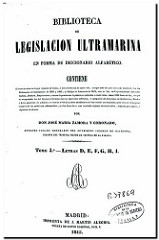Nerves are the pathways the body uses to communicate things from pain to temperature to just general sensation. The system of nerves in the body is known as the nervous system. Normally, it is very effective for making sure your brain is able to control the body correctly, but sometimes we get nerve pain.
Our best medical knowledge says that nerve pain is a result of some sort of damage or injury to one or more nerves. Of course, there are many different causes, including trauma, disease, disorder, substance abuse, and even medication. Others are born with nerve problems. The normal way that it transmits messages about pain, sensation, and even heat or coldness may be radically changed. These abnormal messages cause the sufferer to feel chronic pain in the nerves of the hands, arms, legs, etc.
It can be especially difficult to treat because about 3 out of 10 people don’t know how they got it. Even knowing the cause does not guarantee any cures. The vast majority of time the treatment is pain management.
Here’s some more information about the most common types of nerve pain.
Spinal Nerve Disorder
Certain diseases can cause damage to the spine that affects the nervous system. More often than not, however, spinal disorders are a result of trauma – car accidents, falling down stairs, or violence acts. The pain is usually felt in the neck and back.
Post-herpetic Neuralgia
The virus that causes chickenpox and shingles stays in the spine. While the symptoms of rash, burning, and tingling are most famous, less known is that it can cause paralysis and nerve damage that is sometimes permanent. The resulting pain that continues after the rash is gone is known as post-herpetic neuralgia.
Diabetic Nerve Pain
This happens to a lot of people with diabetes and can happen to any diabetic person. Also known as diabetic peripheral neuropathic pain (DPNP), it affects the hands and arms as well as feet and legs. Because of nerve confusion, people with DPNP often describe the sensation as burning, stabbing, and tingling. Diabetic Nerve Pain must be treated by a doctor or a more serious condition may develop.
Trigeminal Neuralgia
This pain disorder afflicts the head and neck. These pains are sharp, quick, and often shocking. Luckily, they only last a few seconds, but they can be so debilitating that sufferers often are unable to shave and groom themselves around the face and head because it can cause extreme pain. Because the pain often localizes to a very specific part of the face, any slight movement of this area can cause intense pain.
Treatment Options
Science and medicine are always coming up with new treatment ideas and we understand more and more about how our nervous systems work every day. Surgery and therapy is a new option. For most, however, doctors recommend a consistent regimen of medication.
Ultram is often used because it can handle the moderate to intense pains, is fast acting, and has a lesser capacity for abuse than many other opiate painkillers.
Ultram comes in a few different varieties, including Ultram ER – the extended release version.
Sites like http://www.remedy-for-you.com/articles/treating-nerve-pain.html let John Scott help people around the world in understanding and learning more about the subject. See what John Scott has written for the site here.

